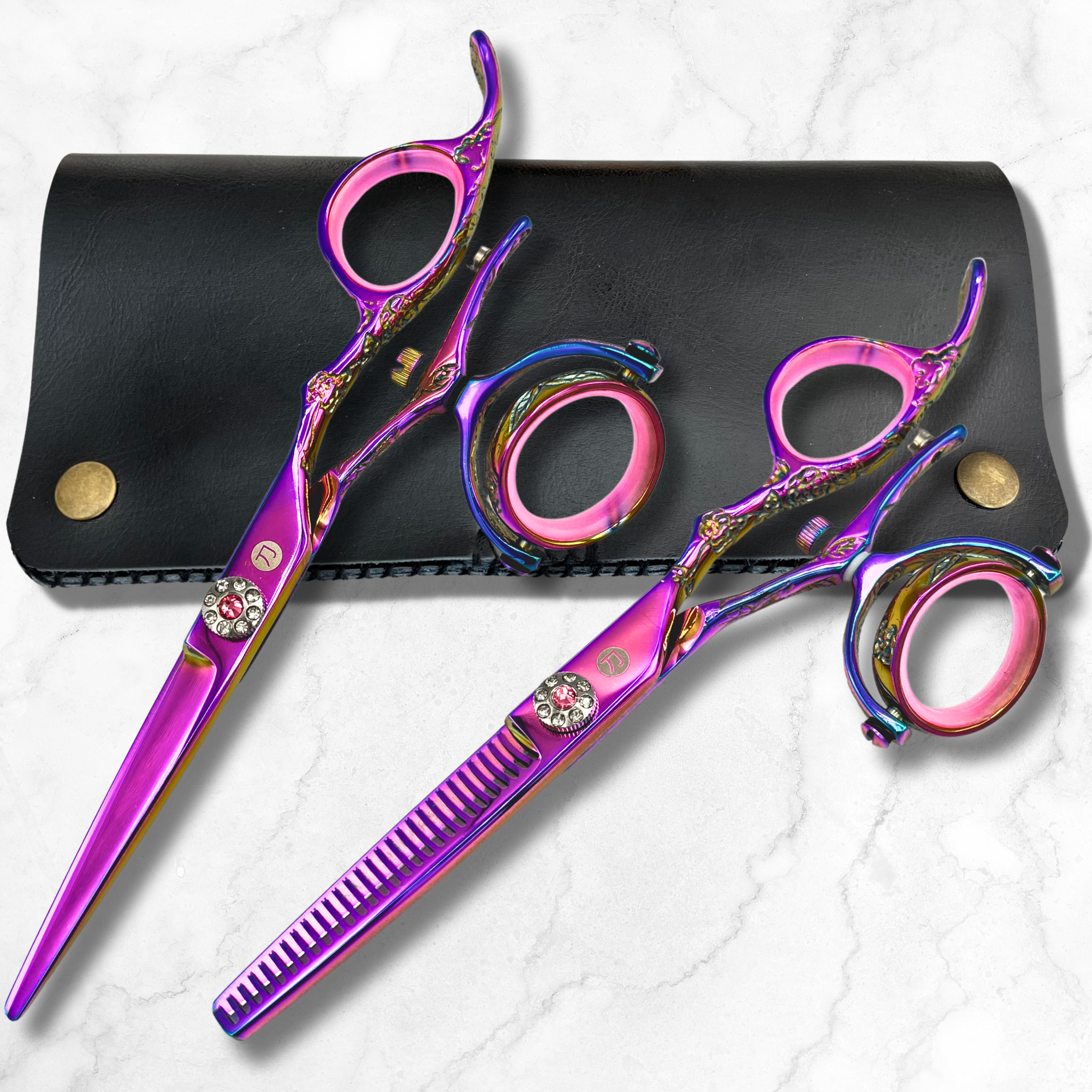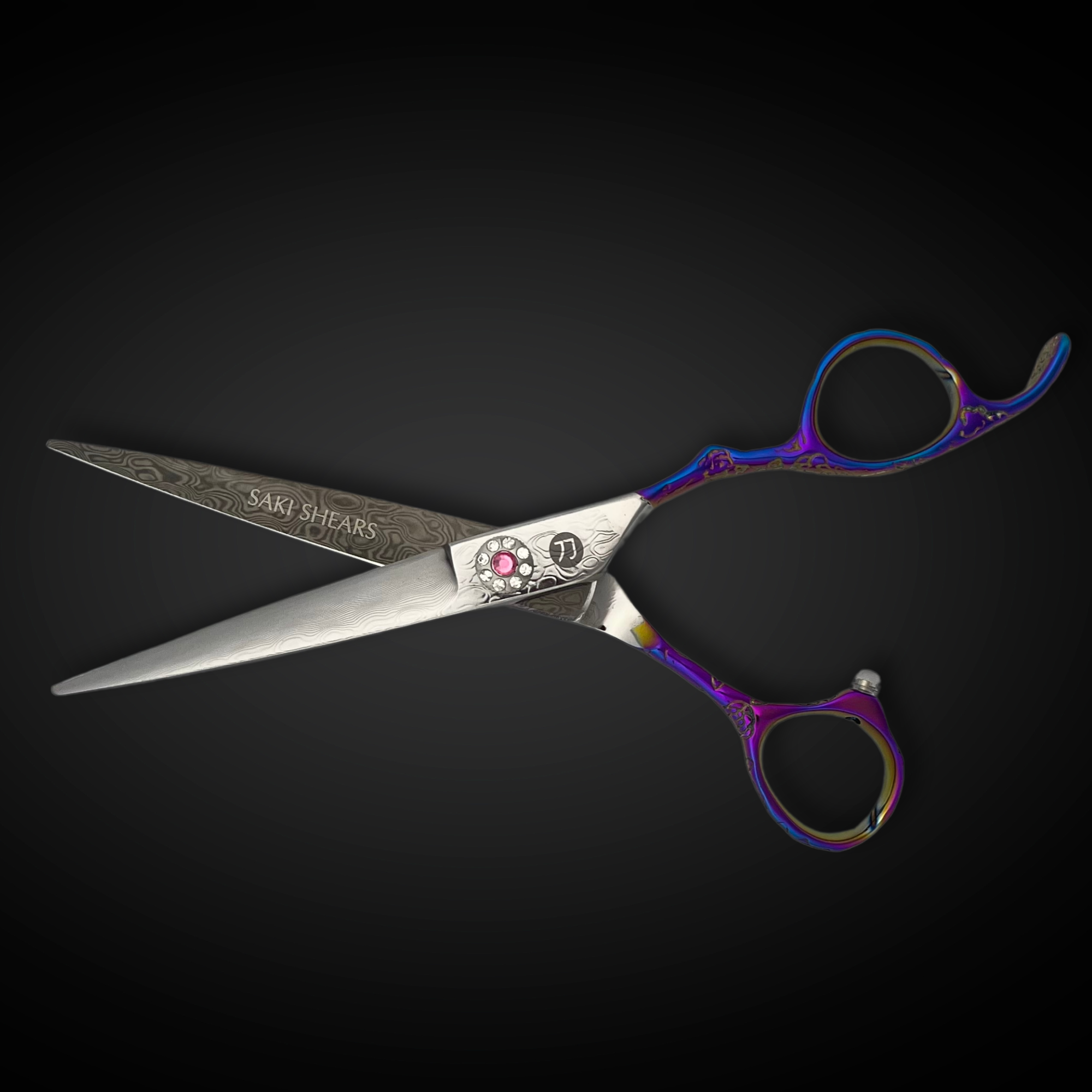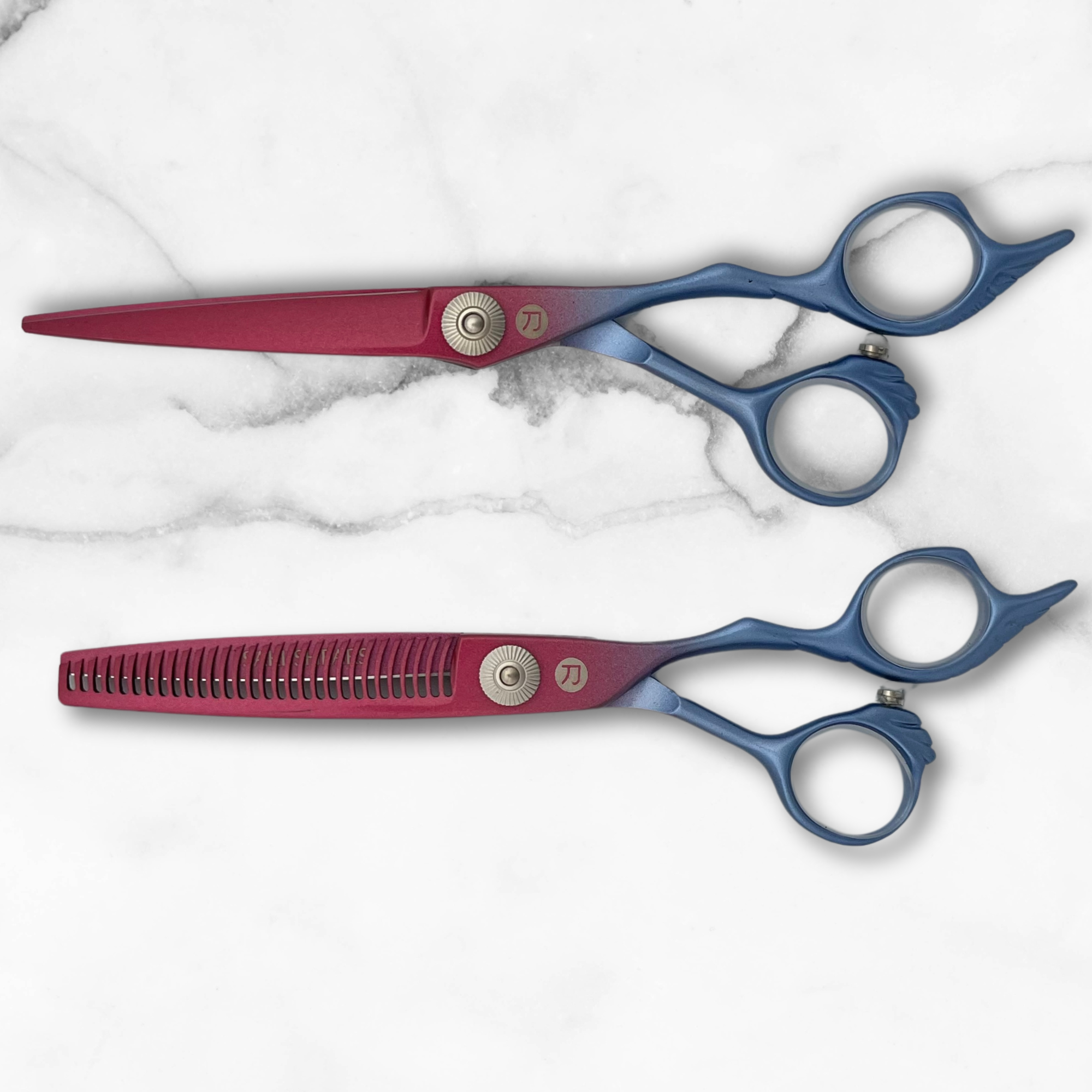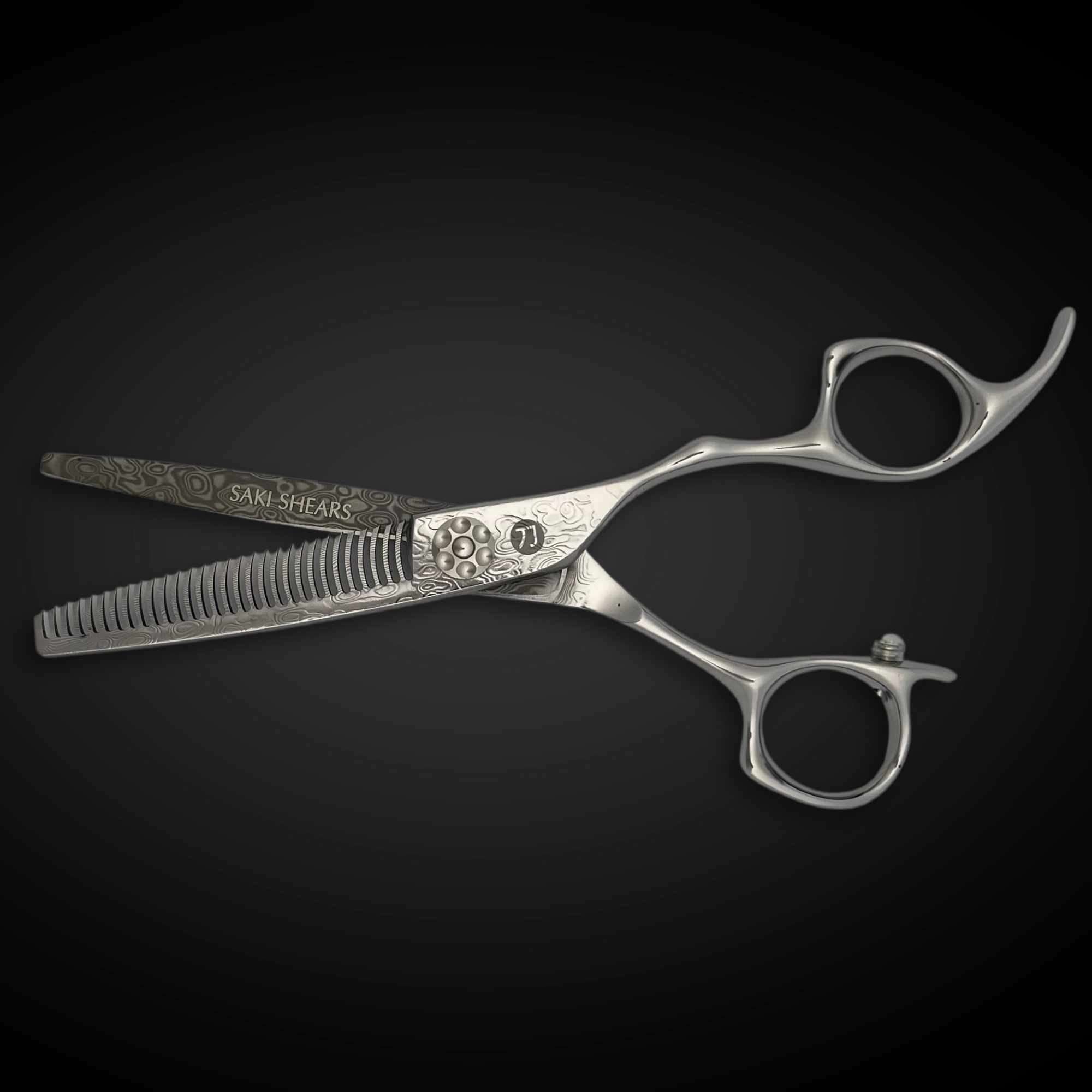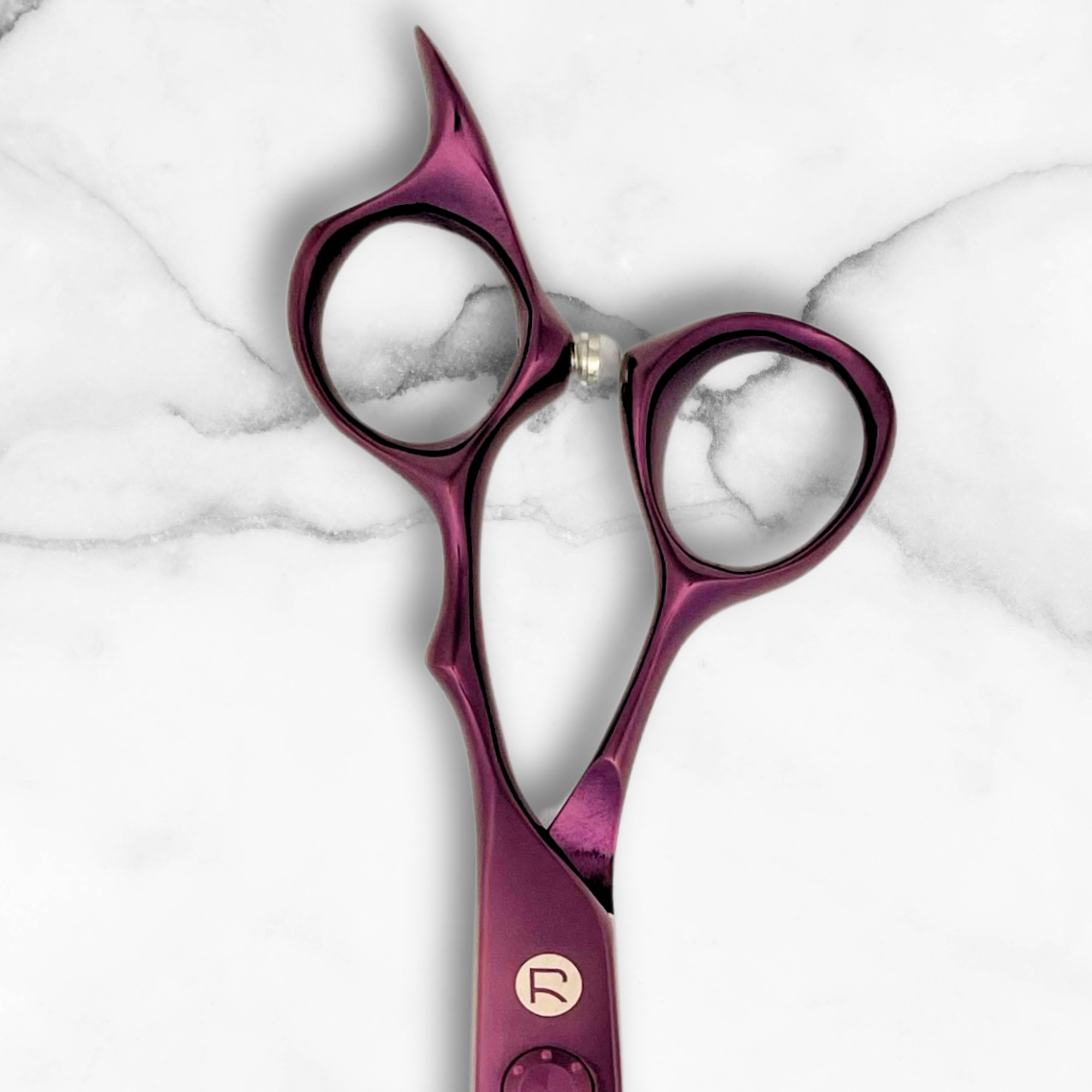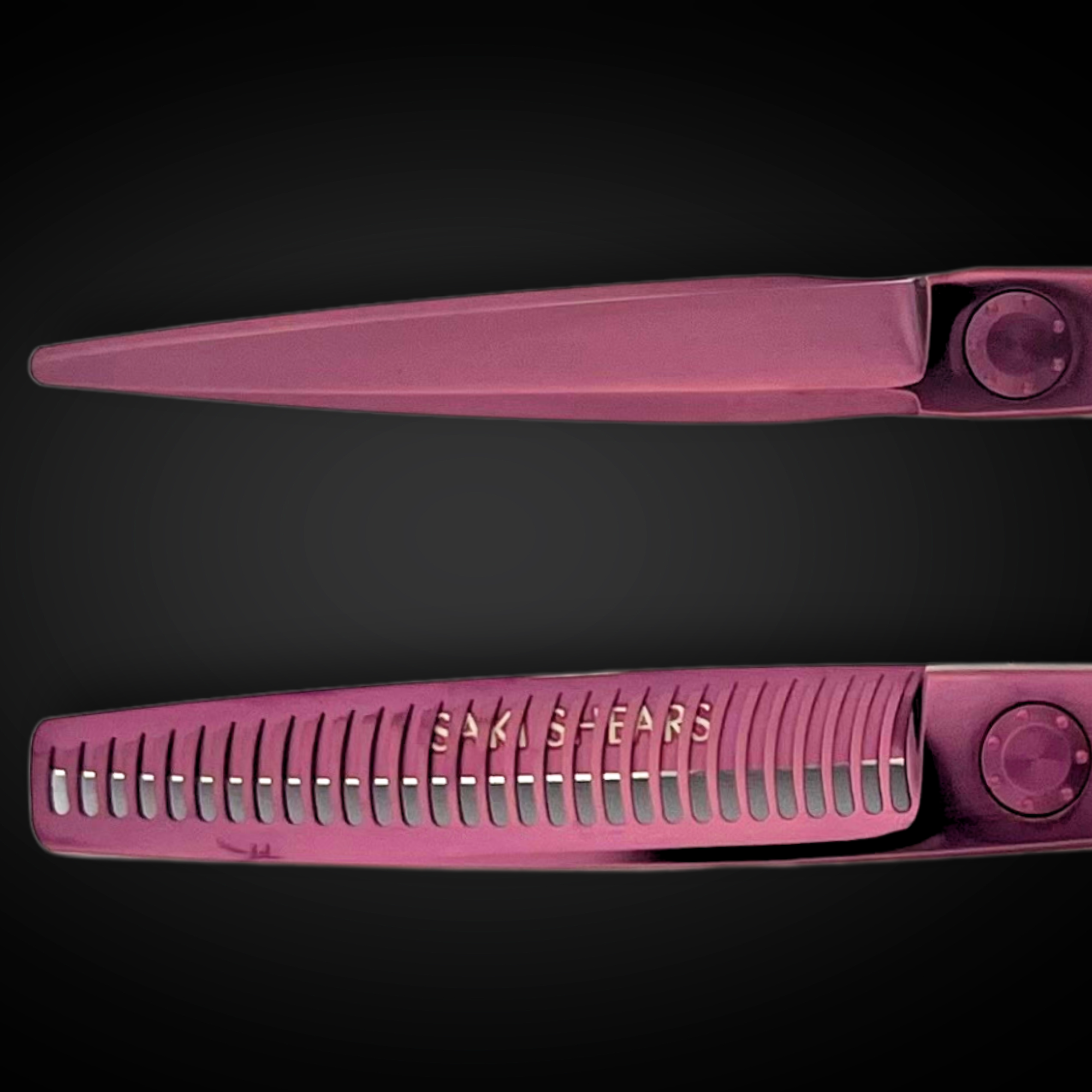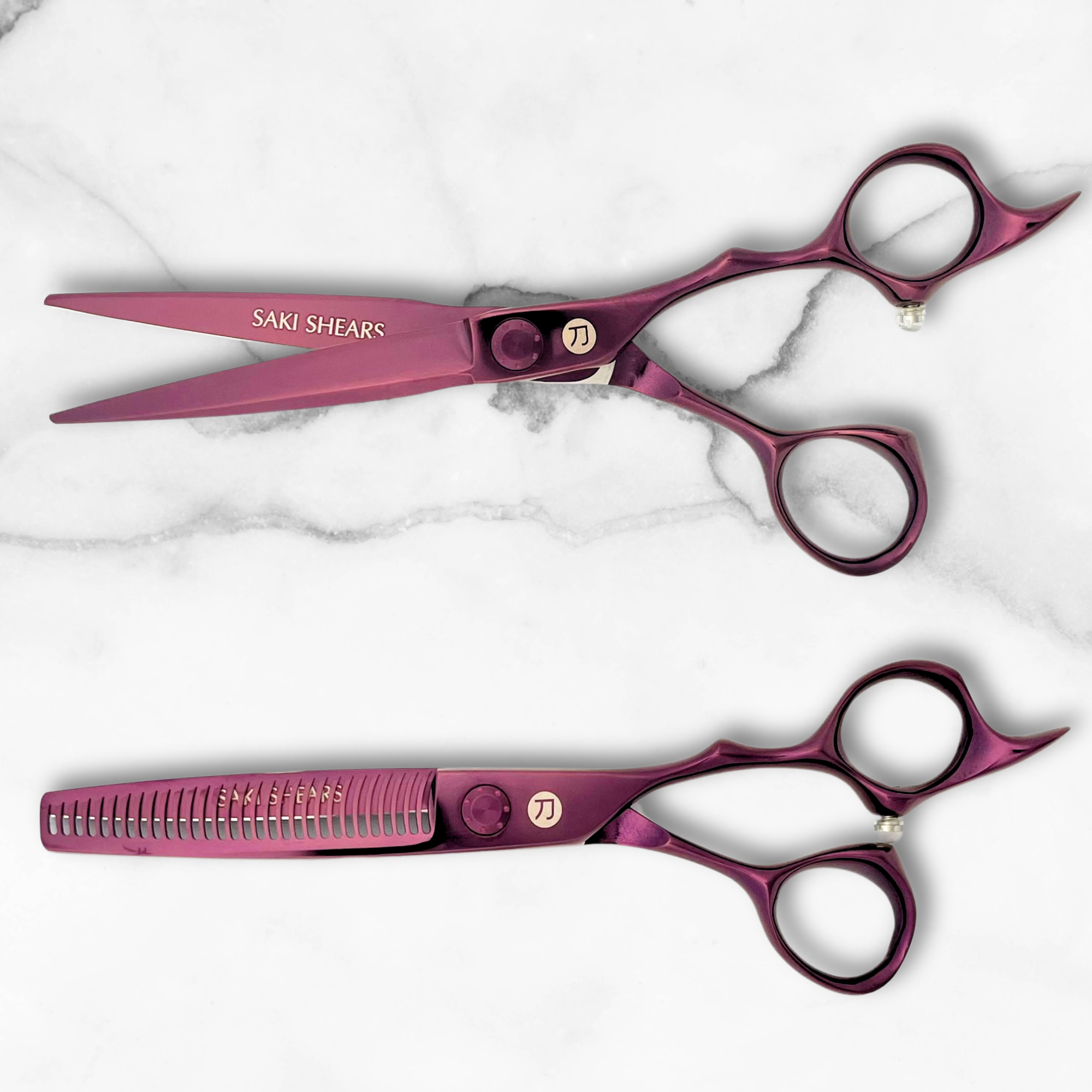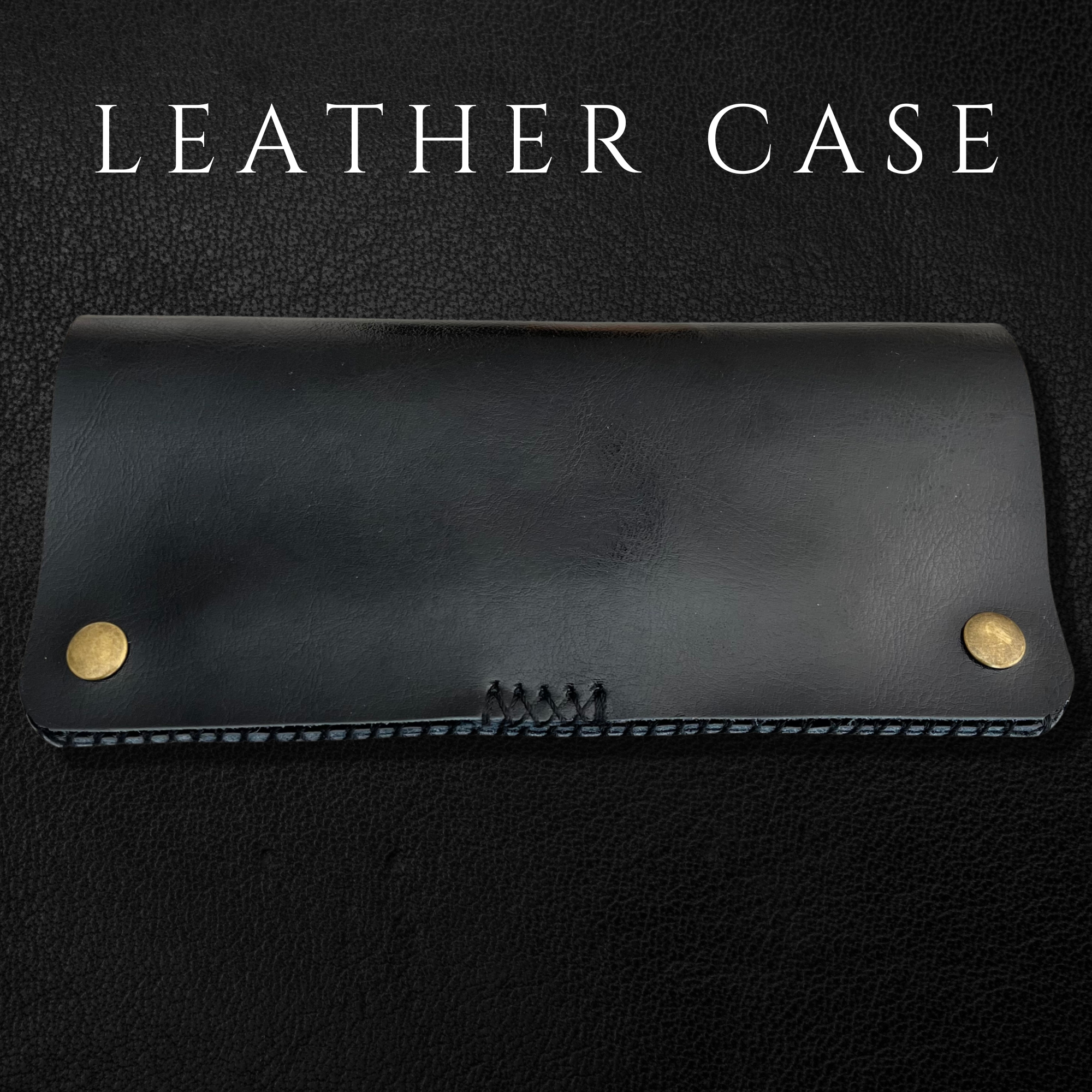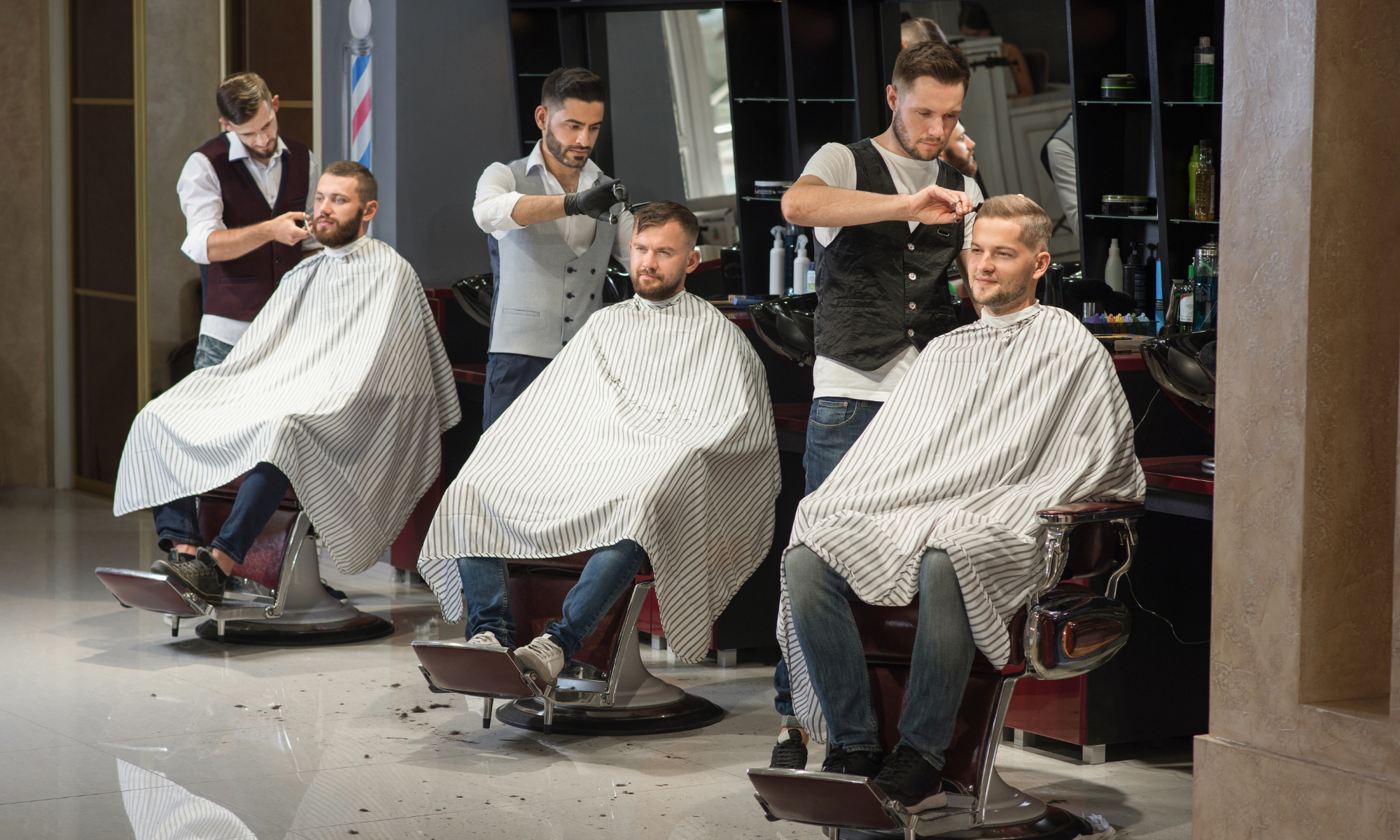Top 10 Hair Cutting Techniques Every Professional Should Know
Master the art of hairstyling with these essential cutting techniques – and discover the shears that make all the difference.
Introduction
In the dynamic world of hairstyling, mastering a diverse range of cutting techniques is not just a skill – it’s an art form. As a professional hairstylist, your hands sculpt not just hair, but confidence, style, and first impressions. The tools you wield and the techniques you employ can transform a client’s entire look and satisfaction level. In this guide, we delve into the top 10 cutting techniques that every professional should have in their repertoire, from the classic to the contemporary.
1. Point Cutting
Description and Purpose
Point cutting is a technique used to create texture and remove bulk from the ends of the hair, giving it a softer, more natural appearance. Instead of cutting straight across, the scissors are held at a slight angle, and the tips are used to cut into the ends of the hair. This technique is perfect for adding movement and a more ‘lived-in’ look to a style.
When and Why to Use Point Cutting
Point cutting is ideal when a softer, more textured finish is desired. It is especially effective for blending layers and avoiding harsh lines in the hair. This technique is a go-to when the goal is to create a look that is effortless and breezy, without sacrificing the health or integrity of the hair.
Tips for Mastering This Technique
- Use shears with a sharp, precise tip, such as Saki Shears, for optimal control.
- Cut into the hair at a slight angle – not too steep to avoid cutting too much hair.
- Practice on a mannequin or doll head before attempting on a client to build confidence and technique.
Point cutting is a fundamental skill for any hairstylist aiming to create modern, wearable styles. It’s all about the details – and those details can make a world of difference in the final look.
2. Slide Cutting
Description and Purpose
Slide cutting, also known as slithering or slicing, is a technique where the stylist slides the shears down the hair shaft, removing weight and creating movement without altering the overall length significantly. It’s a fantastic way to add texture and softness to a hairstyle, making the ends appear more seamless and natural.
Ideal Hair Types for Slide Cutting
This technique works wonders on medium to thick hair, helping to remove bulk and create a more streamlined silhouette. It is generally not recommended for very fine or fragile hair, as it can lead to breakage.
Common Mistakes to Avoid
- Sliding the shears too aggressively, which can damage the hair.
- Using blunt or dull shears; sharp, high-quality shears like Saki Shears are essential for clean, precise cuts.
- Overusing the technique, which can lead to overly thinned hair.
Slide cutting is a stylist’s secret weapon for creating effortlessly chic, flowing hairstyles.
3. Dry Cutting
Description and Purpose
Dry cutting is the technique of cutting the hair when it is dry, as opposed to wet. This method allows the stylist to see the hair’s natural shape, how it falls, and how much volume it has, offering a clear picture of the final look as they cut.
Benefits of Dry Cutting
- Immediate visual feedback, allowing for more precise shaping.
- Reduced chance of cutting too much, as dry hair doesn't have the ‘shrinkage’ factor that wet hair does.
- Ability to tailor the cut to the hair’s natural texture and wave pattern.
How It Differs from Wet Cutting
Wet cutting is the traditional method and provides more control over the hair, making it easier to manage and cut. Dry cutting, on the other hand, allows for more spontaneity and customization in the cut, as the stylist can see the hair’s natural movement.
Dry cutting is an art form in itself, requiring a keen eye, steady hand, and, of course, a pair of reliable, sharp shears – like those from Saki Shears.
4. Razor Cutting
Description and Purpose
Razor cutting is a technique that involves using a straight razor or a razor comb to cut the hair, as opposed to traditional shears. This method creates a softer, more organic edge to the hair, and is perfect for creating texture, movement, and a deconstructed, modern look.
The Effects That Can Be Achieved with Razor Cutting
- Effortless, lived-in styles with natural movement
- Soft, feathered layers that blend seamlessly
- Debulking thick hair without a blunt edge
Safety Considerations
- Always use a fresh, sharp blade to avoid pulling or damaging the hair
- Exercise caution to avoid cuts; this technique requires a steady, experienced hand
- Not recommended for clients with very fine or damaged hair, as it can lead to further breakage
With razor cutting, the stylist is truly sculpting the hair, creating a bespoke shape that falls perfectly for each individual client.
5. Texturizing
Description and Purpose
Texturizing is a broad term for techniques that remove bulk from the hair, create movement, and blend layers. It’s the secret to turning a good haircut into a great one, adding that final touch of professional polish.
Different Texturizing Techniques and Their Effects
- Thinning Shears: Used to remove bulk and create a softer blend between layers. Ideal for thick, heavy hair.
- Notching: Involves taking small ‘notches’ out of the hair for a subtle, natural texture.
- Point Cutting: As discussed earlier, this is a form of texturizing that adds softness to the ends.
When to Avoid Texturizing
- On very fine or thinning hair, as it can make the hair appear even thinner
- On extremely curly hair, where it can create frizz
For the ultimate in precision and control when texturizing, a high-quality pair of shears, such as Saki Shears, is a stylist’s best friend. They allow for meticulous work that elevates the entire look.
6. Undercutting
Description and Purpose
Undercutting involves cutting the hair underneath shorter while leaving the top layers longer. This technique removes weight from the hair, making it more manageable and adding significant movement. It’s a bold, modern look that can be as subtle or as dramatic as the client desires.
How Undercutting Can Remove Weight and Add Movement
- By removing hair from the lower layers, undercutting allows the top layers to fall more smoothly and move more freely.
- It can create a ‘hidden’ effect, where the undercut is only visible when the hair is styled in certain ways, adding an element of surprise to the look.
Suitable Hair Types for This Technique
- Ideal for thick, dense hair that needs weight removal
- Can be used to add edge to straight hair
- Not typically recommended for very fine or thin hair
Undercutting is a statement, a bold move that shows a client’s personality and style.
7. Layering
Description and Purpose
Layering is one of the most fundamental cutting techniques in a stylist’s arsenal. It involves cutting hair at different lengths throughout the hairstyle. Layering can add volume to flat hair and remove weight from thick or curly hair. It’s the key to creating movement and dimension in a hairstyle.
Different Types of Layering Techniques
- Long Layers: Add movement and reduce bulk without dramatically altering the hair’s length
- Short Layers: Create volume and lift, especially at the crown
- Face-Framing Layers: Soften and shape the face, drawing attention to the eyes and cheekbones
How to Avoid Common Layering Mistakes
- Always start with a clear plan and section the hair meticulously
- Be mindful of the client’s hair type and face shape
- Use high-quality, sharp shears, like Saki Shears, for clean, precise cuts that make layering a breeze
Layering is an art that requires a deep understanding of hair and a skilled hand, turning a basic cut into a sculpted masterpiece.
8. Graduation
Description and Purpose
Graduation is a technique that involves cutting hair with tension and at an elevation, creating a soft build-up of weight. It’s used to create shapes that have a more rounded or beveled line, adding fullness and shape to a hairstyle.
The Difference Between Graduated Cuts and Layered Cuts
- Graduated cuts create a smooth, rounded shape with more weight, while layered cuts remove weight and create movement without necessarily changing the hair’s overall shape.
How to Achieve a Smooth Graduation
- Consistent tension and precise angles are key
- Comb the hair cleanly and consistently
- Use shears with a reliable, sharp edge, like Saki Shears, for clean and precise lines
Graduation is a hallmark of a skilled stylist, showcasing technical prowess and an eye for shape and balance.
9. Club Cutting
Description and Purpose
Club cutting, also known as blunt cutting or straight cutting, is the most straightforward technique, but it’s foundational. It involves cutting the hair straight across, creating a blunt, even edge. This technique is perfect for maintaining strong, healthy ends and creating a polished, classic look.
When to Use Club Cutting for a Blunt, Even Edge
- Ideal for clients with fine hair who want to maintain the appearance of thickness
- Perfect for creating strong, geometric shapes in haircuts
Tips for Precision
- Keep the shears steady and move your body, not your hands, to maintain a straight line
- Use shears that offer a perfect balance and sharp, precise blades, such as Saki Shears, to ensure that every cut is clean and exact
Club cutting is about precision and control, creating clean, strong lines that form the foundation of an exceptional haircut.
10. Deep Parallel Point Cutting
Description and Purpose
Deep Parallel Point Cutting is a technique where the stylist inserts the shears deeply into the hair at a parallel angle to the hair strand and cuts. This method removes bulk, creates internal texture, and maintains the hair’s length, allowing for a softer, more organic shape.
How This Technique Can Add Texture Without Removing Length
- It creates invisible layers within the hair, allowing for movement without altering the overall silhouette.
- Ideal for clients who want a change without sacrificing length.
Ideal Scenarios for Using Deep Parallel Point Cutting
- To break up heavy, solid lines in long hair
- To add movement and texture to medium-length styles
This technique is a game-changer for clients who crave movement and texture but are committed to maintaining their length.
The Right Tools for the Job: A Spotlight on Saki Shears
Introduction to Saki Shears as a Premium Choice for Professional Hairstylists
- Saki Shears are the epitome of precision and quality, designed for professionals who demand the best. Crafted from premium materials, these shears are engineered for comfort, durability, and unparalleled performance.
How the Right Pair of Shears is Essential for Executing These Cutting Techniques Effectively
- The importance of a sharp, precise cut in achieving desired styles
- How Saki Shears’ ergonomic design reduces strain during long salon days
Specific Features of Saki Shears That Make Them Stand Out
- High-quality materials for long-lasting sharpness
- Balanced weight for comfortable handling
- Precision blades for clean, exact cuts
In the ever-evolving world of hairstyling, mastering a diverse range of cutting techniques is the cornerstone of a professional’s craft. These techniques, honed through education and practice, are what transform a good hairstylist into a great one. They are the tools that allow a stylist to sculpt not just hair, but confidence, style, and individuality. With the right tools, especially a pair of reliable, sharp Saki Shears, a stylist is equipped to bring their artistry to life, creating looks that are as unique and vibrant as the clients themselves. In this profession, continuous learning is the pathway to mastery, and the journey is as rewarding as the stunning transformations that are created in the stylist’s chair.
The artistry of hairstyling is a dance between creativity, skill, and the perfect tools – and it’s a dance that never ends.

